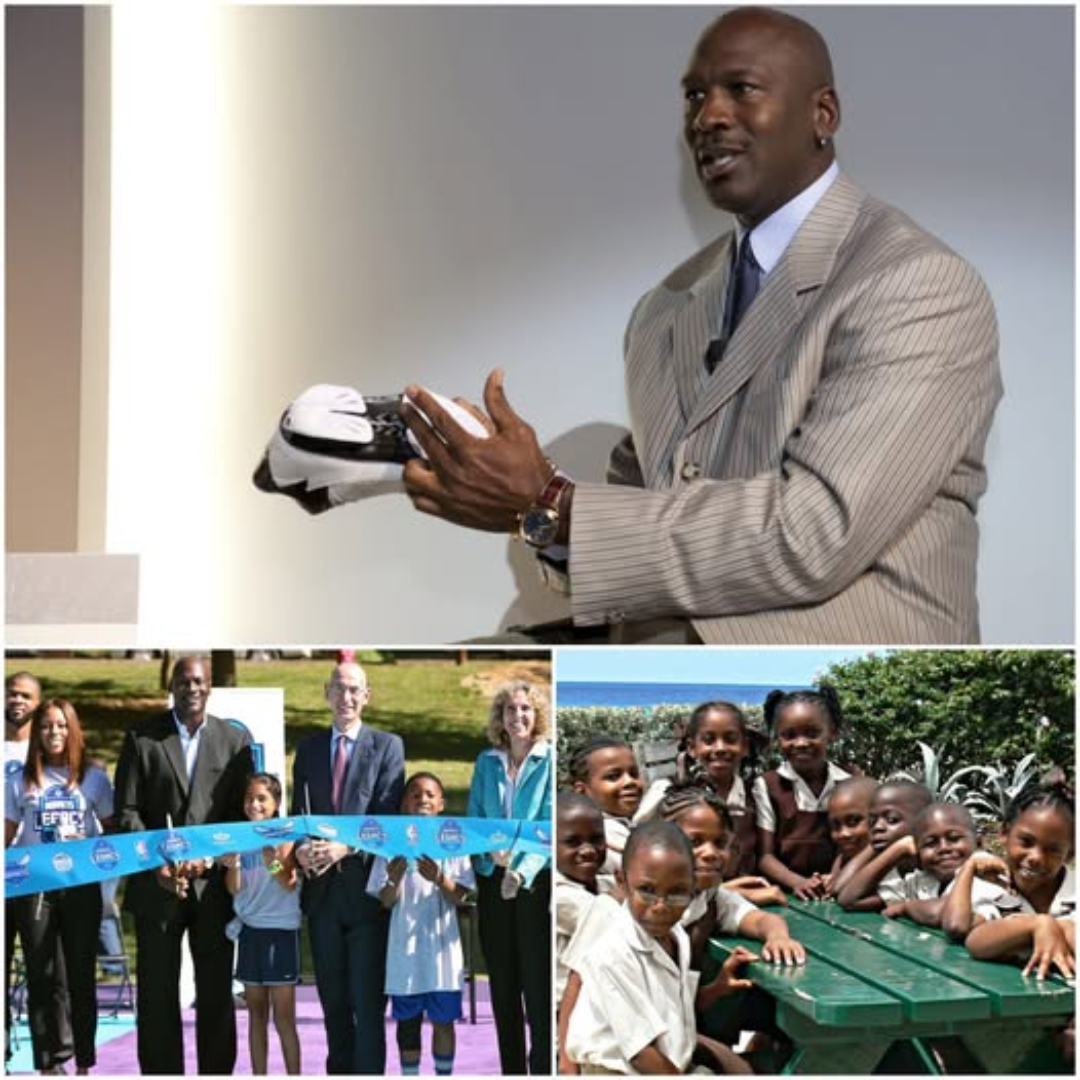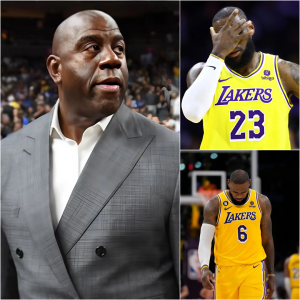Under the dazzling lights of All-Star Weekend, the crowd expected dunks, cheers, and celebrity cameos. What they didn’t expect was Michael Jordan — the living legend himself — stepping onto the stage with tears in his eyes and a message that silenced the entire arena. “These shoes changed my life,” he said, holding up a pair of classic Air Jordans. “Now it’s time they change someone else’s.”
In an emotional announcement that immediately went viral, Jordan revealed he would donate 500 pairs of brand-new Air Jordans to underprivileged children across the country. The audience roared, and social media lit up in seconds. Fans, athletes, and celebrities flooded timelines with admiration. “This is why MJ will always be the GOAT — not just in basketball, but in heart,” one fan wrote.

For a brief, shining moment, it felt like the world had come together to celebrate something pure — a legend giving back, connecting the next generation to his legacy through the shoes that defined an era.
But as it often goes in today’s world, that joy didn’t last long.
Only a few hours later, the internet turned from celebration to suspicion — and then to outrage. Photos surfaced showing the boxes of donated shoes stamped not only with the Jumpman logo but also with a new corporate sponsor’s branding — a company that had recently partnered with Jordan Brand in a multimillion-dollar deal.
Immediately, critics began to question the sincerity behind the gesture. “So it’s not a donation, it’s an ad campaign,” one user wrote on X (formerly Twitter). Another fired off: “500 pairs of shoes and 500 free billboards. Genius move, but don’t call it charity.”
The controversy exploded under hashtags like #JordanGate and #SneakerPRStunt, with thousands of posts dissecting every angle of the event. Some accused Jordan of using charity for promotion; others claimed it was just a marketing strategy disguised as kindness.
Within hours, think pieces appeared across sports blogs and entertainment sites, debating whether celebrity philanthropy could ever be “authentic.” One headline read: “Did Michael Jordan Just Commercialize Generosity?”
Yet amid the backlash, Jordan’s defenders were quick to speak up. Longtime fans and former teammates reminded critics of his decades-long commitment to supporting youth programs, education, and community initiatives. “Michael’s been donating millions for years — this is just another chapter,” wrote former Chicago Bulls player Horace Grant. “People forget he’s opened hospitals and schools. He doesn’t need the PR.”

Still, the damage was done. The debate had gone global, and everyone had an opinion.
Adding fuel to the fire, a short clip began circulating — filmed by a volunteer during the donation event — showing Jordan walking into a warehouse filled with kids eagerly waiting for their shoes. In the video, one child is heard asking, “Mr. Jordan, will I get to wear the same shoes you wore in the Finals?” Jordan smiled and replied, “Even better — you’ll write your own story in them.”
The clip was heartwarming, but it also reignited the argument: Was that moment spontaneous, or staged for cameras?
By late evening, Jordan’s representatives issued a brief statement addressing the growing criticism:
“Michael’s goal has always been to inspire and uplift young people. The donation was not for publicity, but for impact. We stand by his commitment to giving back.”
Despite the statement, discussions raged on. Some analysts pointed out that Jordan — who became the first billionaire athlete largely through his sneaker empire — may have unintentionally blurred the line between philanthropy and branding. Others, however, praised him for continuing to use his influence to bring joy to kids who might never have owned a pair of Jordans otherwise.

Behind the scenes, a source close to the basketball icon told Sports Insider that Jordan was “deeply hurt” by the criticism but determined to keep doing good quietly. “He feels misunderstood,” the source said. “He didn’t do this for cameras. He did it because he knows what it means to be that kid — the one who dreams of something better.”
And perhaps that’s the truth hidden behind all the noise. For every critic accusing him of chasing attention, there are hundreds of children smiling, lacing up their first real sneakers, and running toward their own future.
In the end, whether it was a PR stunt or an act of genuine compassion may not matter as much as the result. Because for those 500 kids, it wasn’t about hashtags, headlines, or sponsorships. It was about hope — and the feeling of being seen by one of the greatest athletes to ever live.
As one fan perfectly put it online: “They can argue all day, but those kids got new shoes and new confidence. That’s something money — or marketing — can’t fake.”
Love him or criticize him, Michael Jordan once again proved that his impact stretches far beyond the basketball court — and even in controversy, his name still makes the world stop and talk.





